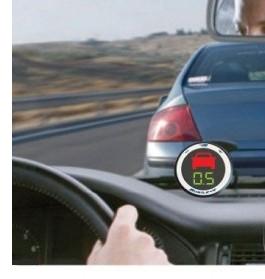 Technology capable of helping drivers look out for cyclists on the road is not new, but up until now such systems have been available only as an optional extra on new cars. The Mobileye C2-270 uses a dashboard-mounted camera that is as easy to install as a satnav to predict and warn of potential collisions.
Technology capable of helping drivers look out for cyclists on the road is not new, but up until now such systems have been available only as an optional extra on new cars. The Mobileye C2-270 uses a dashboard-mounted camera that is as easy to install as a satnav to predict and warn of potential collisions.
Similar technology is available as an optional extra from manufacturers such as Volvo, but crucially the Mobileye can be used in any car.
“Sorry mate, my car didn’t see you”
Should the system detect that the vehicle is in danger of colliding with another car, motorcycle, cyclist or pedestrian, it alerts the driver via an alarm and dashboard-mounted screen no larger than a satnav. The alarm also sounds if the driver is drifting out of their lane.
The Mobileye C2-270 is not able to apply the brakes itself, but ‘crash-proof’ systems that can take complete control of a car are already being used on the road.
The ‘Collision Warning with Full Auto Brake’ system was designed to recognise the leg and arm movements of pedestrians, but during testing it was found to successfully detect and react to cyclists who were at risk of being struck by the car.
In such a situation, the driver first gets a flashing light in the windscreen’s head-up display that looks like a brake light in front of the vehicle. This warning is intended to prompt an immediate, intuitive reaction from the driver.
Car applies emergency brakes when driver fails to respond
Should the driver fail to respond to the warning and the system assesses that a collision is imminent, the car is brought to a complete stop.
Above 12.5mph, the system will not bring the car to a complete standstill but reduce the speed as much as possible. In most cases, it is able to reduce the collision force by about 75 per cent.
A spokesperson for the Environmental Transport Association (ETA) said: “Auto brake systems pave the way for entirely autonomous and crash-proof vehicles.”
| The car that stops itself | |
|---|---|
| Volvo designed the technology to protect pedestrians, but the system appears to work with cyclists too. This short film shows the car scanning for pedestrians and cyclists during testing. |
0 Comments View now